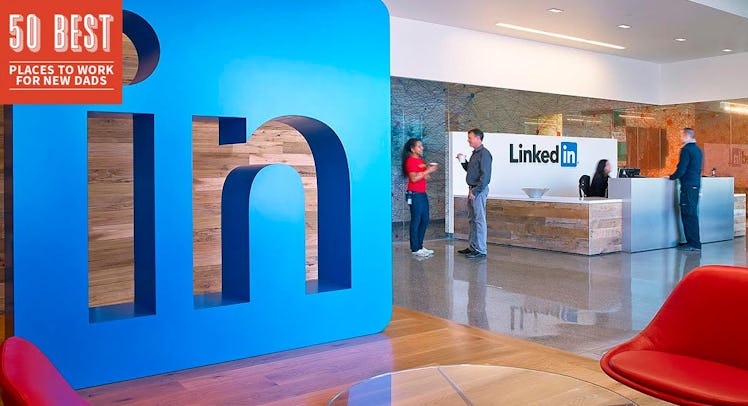The 50 Best Places to Work For New Dads 2018: LinkedIn
Our list of 50 Best Places to Work For New Dads in 2018 recognizes companies with exceptional paternity leave and benefits programs.

Fatherly’s annual “50 Best Places to Work for New Dads” ranking is a celebration of corporations committed to helping men manage their dual roles as providers and caregivers. Though only one company can be ranked number one, every company featured has provided real support for working parents with exceptional and thoughtful offerings.
Rank: 16
2017 Rank: 37Number of Employees: 11,800
One of the biggest names in the networking and hiring game (560,000,000 accounts and counting), LinkedIn is headquartered in Sunnyvale, California, and has a very Silicon Valley approach to both corporate growth and employee wellbeing. Launched in 2003, LinkedIn boasts millions of users on its social network, which was bought by Microsoft in late 2016. The majority of LinkedIn’s workforce perform sales and technical jobs. All are entitled to 12 full weeks of paid leave for a birth, adoption, or surrogacy.
LinkedIn’s generous leave policies are bolstered by a ramp-back program that allows dads to return part-time for up to four weeks at the tail-end of their leave. The company also offers a generous 10 days of backup childcare, employees are also given a reimbursable allowance of up to $2,000 for childcare, day camp, or after-school care expenses. That allowance can also be spent on gym memberships, fitness classes, house cleaning, pet walking, tax prep, elder care, house cleaning, elder care, and/or dog walking.
Fatherly’s 2018 rankings are based on a scoring metric inclusive of data related to company policies on the following issues: paid parent leave, ramp-back time, flextime, onsite childcare, childcare subsidies, backup childcare, number of sick days, support groups, fertility aid, adoption aid, student loan assistance, education funding, bereavement leave, elder care planning. Length of paid leave, onsite childcare, and ramp-back time were the most heavily weighted ranking factors.
This article was originally published on